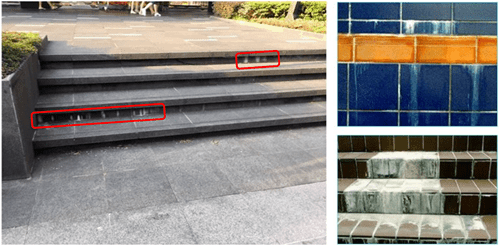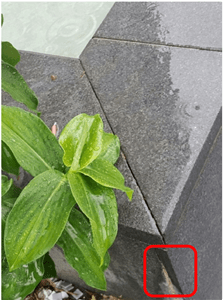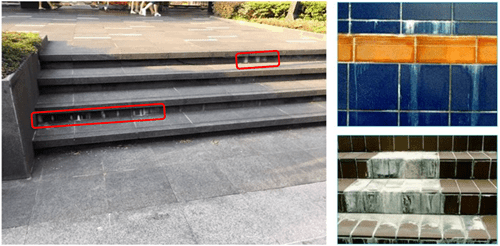Apa yang dimaksud Efflorescence?
Pernahkah anda memperhatikan endapan putih pada permukaan dinding dan lantai ubin pada saat instalasi? Residu putih ini adalah hasil dari Efflorescence. Efflorescence adalah kejadian alami dalam aplikasi semen Portland. Semua produk berbasis semen Portland, yang ada dalam render dan screed mortar serta sebagian besar perekat yang mengandung semen, akan memiliki kristal kalsium hidroksida setelah proses hidrasi.
Efflorescence biasanya muncul dari perkolasi air melalui bahan dasar semen yang melepaskan garam yang larut, yang kemudian mengendap ke permukaan melalui sambungan. Serbuk kapur, bila terpapar ke atmosfer, akan bereaksi dengan karbondioksida membentuk kristal kalsium hidroksida.
Sederhananya, keberadaan air, yang mengalir melalui jalur air dan bersentuhan dengan garam kalsium yang ada dalam produk berbahan dasar semen, naik ke permukaan melalui pori-pori kapiler dari nat ubin yang mengandung semen. Setelah air menguap, meninggalkan residu putih. Efflorescence tidak berbahaya, tetapi tidak sedap dipandang, dan dapat terjadi pada permukaan vertikal dan horizontal.

Apa yang menyebabkan Efflorescence?
Kombinasi dari 3 faktor berikut yang dapat menyebabkan Efflorescence:
Kondisi area yang dapat menyebabkan efflorescence:

Tindakan pencegahan
Untuk menghilangkan efflorescence secara total pada pemasangan ubin, instalasi ubin / batu harus bebas dari mortar yang mengandung semen. Namun, hal ini tidak selalu memungkinkan karena produk berbahan dasar semen biasanya dibutuhkan untuk leveling bed (yaitu render dan screed).
Oleh karena itu, akan lebih baik untuk menghilangkan salah satu dari tiga kondisi di atas untuk mencegah efflorescence. Mari kita lihat langkah-langkah pencegahannya:
• Untuk aplikasi lantai eksternal, penting untuk memastikan bahwa sambungan ubin diisi secepat mungkin selama pekerjaan berlangsung. Jika tidak, sediakan penutup untuk melindungi sambungan terbuka dari hujan dan air setelah ubin dipasang.
• Pasang penghalang kedap air (misal: mortar kedap air yang terbuat dari semen fleksibel) di atas seluruh leveling bed sebelum memasang ubin dengan perekat.
• Gunakan perekat berbahan dasar epoksi atau polyurethane untuk memasang ubin / batu. Jika tidak memungkinkan, alternatifnya adalah menggunakan perekat semen yang cepat berubah. Perekat berbahan dasar semen Granirapid dan Elastorapid dari Mapei mengandung kandungan semen Portland yang lebih rendah dalam formulasinya.
• Biarkan media mengering sepenuhnya sebelum melanjutkan pemasangan ubin.
• Buat celah sambungan yang lebih lebar di antara ubin sehingga sambungan dapat dipasang dengan benar dengan kedalaman yang memadai.
What is Efflorescence?
Have you ever noticed white deposits on the wall and floor surfaces of your tile or stone installations? This white residue is the result of efflorescence. Efflorescence is a natural occurrence in Portland cement applications. All Portland-cement based products, which are present in render and screed mortars and most cementitious adhesives, will have this presence of calcium hydroxide crystals after the hydration process. Efflorescence usually arises from the percolation of water through the cement-based backing that leaches out soluble salts, which are then deposited on the surface through the joints. The leached lime, when exposed to the atmosphere, will react with carbon dioxide to form calcium hydroxide crystals. To put it simply, the presence of water, travelled through a water path in contact with the calcium salts present in cement-based products, is drawn out to the surface through the capillary pores of the cementitious tile grout. Once the water evaporates, it leaves behind a white residue. Efflorescence is harmless, but unsightly, and can occur on both vertical and horizontal surfaces.


Comments
Load more comments